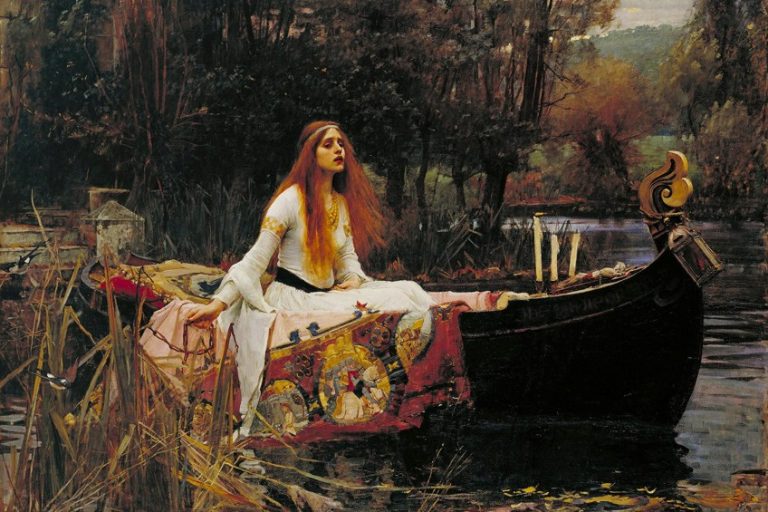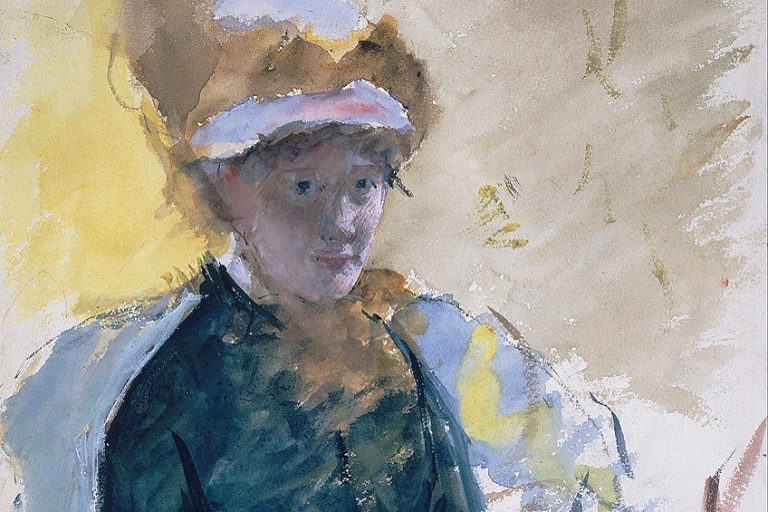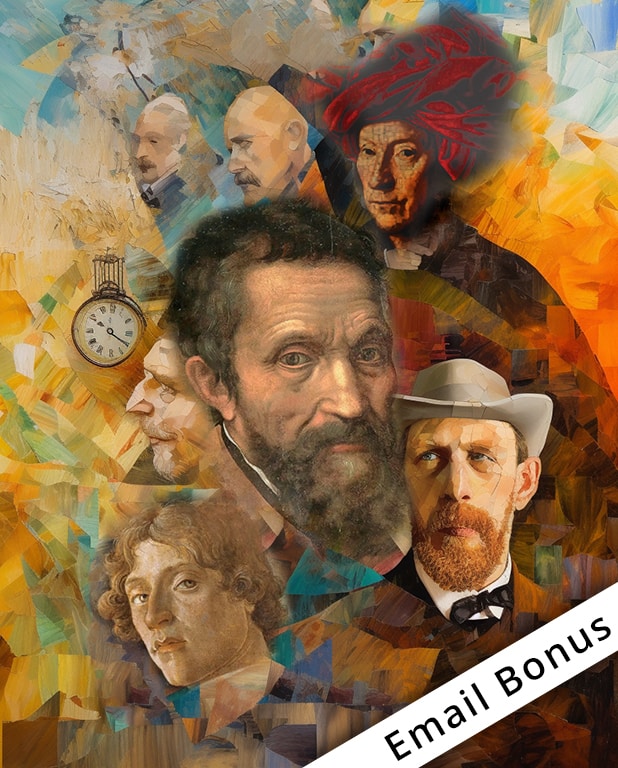“Gismonda” by Alphonse Mucha – An Art Nouveau Masterpiece
Alphonse Mucha’s Gismonda, created in 1894, is a quintessential example of the Art Nouveau movement, characterized by its ornate, flowing lines and rich decorative elements. This iconic poster was commissioned by the renowned French actress Sarah Bernhardt for her performance in the play, Gismonda, at the Théâtre de la Renaissance in Paris. Mucha’s innovative design, featuring Bernhardt in a lavish Byzantine-inspired costume, captivated audiences and catapulted him to fame, solidifying his status as a leading figure in poster art and graphic design. Gismonda not only marked the beginning of Mucha’s successful collaboration with Bernhardt but also helped define the visual aesthetic of an era, merging artistic elegance with commercial appeal.
Key Takeaways
- Gismonda was a pivotal work in Alphonse Mucha’s career.
- The poster features intricate and ambitious design elements.
- It had a significant cultural and commercial impact.
The Emergence of Gismonda
| Artist | Alphonse Mucha (1860 – 1939) |
| Date Created | 1894 |
| Medium | Lithograph |
| Genre | Art Nouveau |
| Period/Movement | Art Nouveau |
| Dimensions (cm) | 216 x 74.2 |
| Series/Versions | Part of Mucha’s theatrical poster series |
| Where Is It Housed? | Private collection |
| What It Is Worth | Depending on the version and condition, prices can range from a few hundred dollars to tens of thousands of dollars for original lithographs. Major museum collections can also have significant value. |
Gismonda marks a significant milestone in the career of Alphonse Mucha, a renowned Czech artist. Created in 1894 as a color lithograph, it was an advertisement for the 1895 production of Victorien Sardou’s play at the Théâtre de la Renaissance in Paris. This piece sparked Mucha’s extensive career and established him as a leading figure in the Art Nouveau movement.

The design of Gismonda is elaborate and ambitious, showcasing Mucha’s unique approach to composition and ornamentation. He depicted Sarah Bernhardt, the legendary actress starring in the play, as an exotic Byzantine noblewoman, complete with a splendid gown, orchid headdress, and a palm branch. This iconic poster became one of Mucha’s most famous works, illustrating his ability to blend fine detail with artistic innovation. Mucha’s Gismonda not only propelled his career but also left a lasting impact on the cultural and commercial worlds. It set a new standard for theatrical posters and solidified his reputation across Europe.
The artwork exemplifies his signature style, which combines intricate patterns, floral elements, and a sense of elegance that resonates with the spirit of the Art Nouveau era.
Alphonse Mucha’s Artistic Rise
Alphonse Mucha was a relatively unknown artist in Paris until the Gismonda poster. His unique style, characterized by elaborate, flowing lines and rich ornamentation, caught the public’s eye. The poster was created in 1894 when Mucha was asked to promote a new production of Gismonda starring Sarah Bernhardt. The success of the poster was immediate, bringing Mucha both fame and financial security.

Mucha’s work was highly distinctive. He often used themes from nature and incorporated intricate details. This style, later known as Art Nouveau, became a defining feature of his works. The Gismonda poster showcased this with its detailed portrayal of Bernhardt in a Byzantine-inspired outfit. His creation secured him a six-year contract with Bernhardt, solidifying his position in the Parisian art scene.
Sarah Bernhardt’s Theatrical Influence
Sarah Bernhardt, a leading actress of her time, played a crucial role in Mucha’s breakthrough. Known for her dramatic flair and commanding stage presence, Bernhardt was instrumental in popularizing Gismonda. The play, set in medieval Greece, was directed and produced by Bernhardt herself. Her portrayal of an exotic Byzantine noblewoman drew much attention. The decision to commission Mucha to create the promotional poster paid off, as it visually captured her grandeur. Bernhardt’s support gave Mucha’s work a significant boost. Her status in the theater world ensured that the poster was widely seen and appreciated.
This collaboration not only showcased Bernhardt’s talent but also highlighted the synergy between art and theater during the Art Nouveau era.
Artistic Elements and Design
Alphonse Mucha’s Gismonda features detailed artistry, notable for its integration of natural elements and the use of vivid colors and symbols. These elements work in harmony to create a mesmerizing and enduring impression.

Integration of Nature and Femininity
Mucha’s design in Gismonda masterfully integrates nature with feminine beauty. He often used flowers, leaves, and flowing lines to frame the central female figure. This reflects the Art Nouveau style, emphasizing organic forms and curvilinear designs. The depiction of Sarah Bernhardt, the iconic actress, is surrounded by botanical motifs, highlighting her elegance and grace.
By weaving these elements together, Mucha created a sense of unity between the woman and the natural world, enhancing the overall aesthetic appeal.

Use of Color and Symbolism
Mucha’s use of color in Gismonda is both striking and symbolic. He employed a rich palette, combining deep purples, golds, and greens, which added a sense of drama and grandeur to the poster. These colors were carefully chosen to evoke specific emotions and convey the opulence of the theater. Symbols such as halos and intricate patterns served to elevate the status of Bernhardt, portraying her almost as a saintly figure.
The detailed ornaments and background designs reinforced this divine imagery, making the poster not just an advertisement but a work of art in its own right.

Cultural and Commercial Impact
Alphonse Mucha’s Gismonda poster for Sarah Bernhardt significantly influenced both advertisement design and collecting interest in the United States. Gismonda introduced a new art style that transformed advertisement and graphic design. Before Mucha, posters were often simple and text-heavy. Mucha’s work brought in elegant, detailed illustrations and a harmonious color palette. These posters, with their intricate, nature-inspired designs, emphasized aesthetics over mere information. This approach caught the eye of many, leading to a shift in how products and events were advertised. Instead of plain text, colorful and artistic posters became the norm.
The commercial impact was notable. Businesses saw the value in such designs and soon, Mucha’s style was adopted for various products, from cosmetics to chocolate. His influence extended beyond Europe, making a significant mark on graphic design globally.
Collectors and Legacy in the United States
The appeal of Mucha’s art extended into the realm of collectors, particularly in the United States. The unique style and historical significance of his Gismonda poster made it highly sought after in art circles. Collectors appreciated Mucha’s work not just for its beauty, but for its role in shaping modern graphic design. As Mucha’s reputation grew, so did the value of his posters. Many collectors in the U.S. preserved original pieces, allowing them to gain in value over time. Today, Mucha’s legacy lives on in American art galleries and private collections. His influence on both the cultural and commercial aspects of art remains significant, continuing to inspire artists and designers worldwide.

Alphonse Mucha’s Broader Works
Alphonse Mucha was not only known for Gismonda but also for his other works in patriotic themes and contributions beyond poster design. His later works further solidified his influence in the Art Nouveau movement. One of Mucha’s most famous contributions is The Slav Epic, a series of 20 large canvases. This monumental work was completed between 1912 and 1926. It illustrates the history and mythology of the Slavic people, from ancient times to the contemporary period. Much of the series focuses on Czech history. Mucha aimed to inspire national pride and contribute to the cultural identity of his homeland.
Patriotic themes and historical events are recurrent throughout the series. His artistic style combines detailed realism with a romantic and mystical approach.
Contributions Beyond Gismonda
Alphonse Mucha’s contributions extend beyond Gismonda. He created stage sets and costumes for theatres, including those for Sarah Bernhardt, a prominent actress of his time. This demonstrates his versatility as an illustrator. Additionally, Mucha designed a variety of artworks, such as jewelry, advertisements, and magazine covers. He was a founding figure in the Art Nouveau movement, influencing decorative arts through his intricate designs. His work has left a lasting impact on graphic design and art exhibitions globally.

Alphonse Mucha’s masterpiece, Gismonda, not only encapsulates the essence of Art Nouveau but also marks a significant moment in the history of poster art. Through his meticulous attention to detail, elegant lines, and symbolic imagery, Mucha transforms a promotional piece into a work of art that transcends its commercial purpose. The portrayal of Sarah Bernhardt as Gismonda embodies the fusion of beauty, power, and theatricality, capturing the spirit of fin-de-siècle Paris. Gismonda remains a timeless testament to Mucha’s artistic vision and enduring influence on the art world, serving as a reminder of the beauty that can emerge from the collaboration of fine art and advertising.
Frequently Asked Questions
What Is the Significance of the Gismonda Poster in the Art Nouveau Movement?
The Gismonda poster is a key piece in the Art Nouveau movement. Its intricate design and usage of natural forms and flowing lines are characteristic of the style. Created in 1894, it marked a shift in Mucha’s career, establishing his reputation and presenting a new artistic direction.
What Techniques Did Alphonse Mucha Employ in the Creation of Gismonda?
Mucha used the color lithograph technique to create the Gismonda poster. He employed delicate, flowing lines and ornamental details, blending vibrant colors with fine, intricate patterns. These techniques allowed Mucha to create a visually striking and detailed composition that captivated audiences.
What Elements of Gismonda Reflect Alphonse Mucha’s Influence by Occult Symbolism?
Gismonda includes elements such as halos, floral patterns, and mystical figures, which reflect Mucha’s fascination with occult symbolism. These features add a layer of depth and mystery to the artwork, connecting it to deeper cultural and spiritual themes.
In What Way Did Gismonda Contribute to Alphonse Mucha’s Reputation and Career?
Gismonda was Alphonse Mucha’s breakthrough work, propelling him to fame. The poster’s success led to a long-term collaboration with the actress Sarah Bernhardt and established him as a leading figure in poster design. It also helped to popularize the Art Nouveau style, making Mucha a celebrated name in the art world.
Isabella studied at the University of Cape Town in South Africa and graduated with a Bachelor of Arts majoring in English Literature & Language and Psychology. Throughout her undergraduate years, she took Art History as an additional subject and absolutely loved it. Building on from her art history knowledge that began in high school, art has always been a particular area of fascination for her. From learning about artworks previously unknown to her, or sharpening her existing understanding of specific works, the ability to continue learning within this interesting sphere excites her greatly.
Her focal points of interest in art history encompass profiling specific artists and art movements, as it is these areas where she is able to really dig deep into the rich narrative of the art world. Additionally, she particularly enjoys exploring the different artistic styles of the 20th century, as well as the important impact that female artists have had on the development of art history.
Learn more about Isabella Meyer and the Art in Context Team.
Cite this Article
Isabella, Meyer, ““Gismonda” by Alphonse Mucha – An Art Nouveau Masterpiece.” Art in Context. June 19, 2024. URL: https://artincontext.org/gismonda-by-alphonse-mucha/
Meyer, I. (2024, 19 June). “Gismonda” by Alphonse Mucha – An Art Nouveau Masterpiece. Art in Context. https://artincontext.org/gismonda-by-alphonse-mucha/
Meyer, Isabella. ““Gismonda” by Alphonse Mucha – An Art Nouveau Masterpiece.” Art in Context, June 19, 2024. https://artincontext.org/gismonda-by-alphonse-mucha/.











